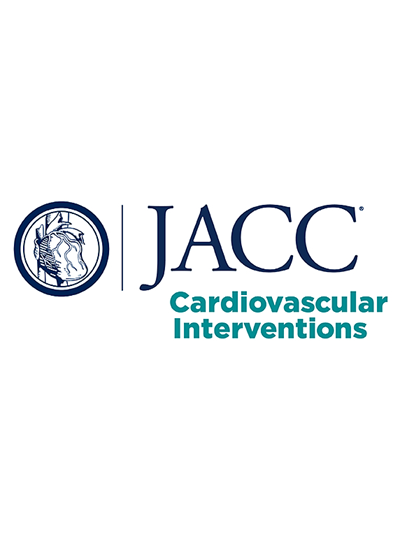Transcatheter Repair in Posterior, Anterior, and Bileaflet Mitral Valve Disease
IF 11.7
1区 医学
Q1 CARDIAC & CARDIOVASCULAR SYSTEMS
引用次数: 0
Abstract
Background
Treating anterior and bileaflet mitral valve disease in patients with primary or degenerative mitral regurgitation (DMR) is considered more challenging than posterior leaflet repair.
Objectives
The aim of this analysis was to evaluate the impact of anterior, posterior, or bileaflet disease on outcomes following mitral transcatheter edge-to-edge repair (M-TEER) in the EXPANDed studies.
Methods
EXPANDed is a pooled, patient-level analysis of subjects undergoing M-TEER with the MitraClip G3 or G4 system as part of the contemporary EXPAND and EXPAND G4 studies. Subjects with DMR were categorized according to echocardiography core laboratory–assessed prolapse or flail location into posterior (prolapse or flail at P1, P2, and/or P3), anterior (prolapse or flail at A1, A2, and/or A3) or bileaflet disease (prolapse or flail at any combination of A1, A2, and A3 and P1, P2, and P3). Key outcomes assessed included procedural outcomes, 30-day major adverse events, and 1-year mitral regurgitation (MR) severity.
Results
Of 2,205 subjects in EXPANDed, 556 had echocardiography core laboratory–assessed DMR and prolapse or flail location. A total of 389 had posterior, 106 had anterior, and 61 had bileaflet disease. All groups experienced low device and procedure times with high procedural success rates (defined as discharge MR ≤2+). Thirty-day major adverse events rates were low across all groups (posterior, 4.4% [17 of 388]; anterior, 3.8% [4 of 105]; bileaflet, 6.6% [4 of 61]; P = 0.65). Through 1 year, all groups showed a significant reduction in MR severity from baseline (MR ≤1+ posterior, 82% [179 of 219]; anterior, 93% [53 of 57]; bileaflet, 97% [28 of 29]).
Conclusions
Results from the EXPANDed studies demonstrate that subjects with DMR treated with M-TEER experienced significant improvements in outcomes, regardless of the location of prolapse or flail.
经导管修复后、前、双侧二尖瓣疾病:扩大后1年的结果
背景:治疗原发性或退行性二尖瓣反流(DMR)患者的前小叶和双小叶二尖瓣疾病被认为比后小叶修复更具挑战性。目的:本分析的目的是评估扩大研究中二尖瓣经导管边缘到边缘修复(M-TEER)后,前、后或双小体疾病对预后的影响。方法:作为当代EXPAND和EXPAND G4研究的一部分,EXPANDed对使用MitraClip G3或G4系统接受M-TEER治疗的受试者进行了患者水平的汇总分析。DMR患者根据超声心动图核心实验室评估的脱垂或连枷位置分为后侧(P1、P2和/或P3脱垂或连枷)、前侧(A1、A2和/或A3脱垂或连枷)或双小体疾病(A1、A2、A3和P1、P2和P3的任意组合脱垂或连枷)。评估的主要结局包括手术结局、30天主要不良事件和1年二尖瓣反流(MR)严重程度。结果:在2205名受试者中,556名有超声心动图,核心实验室评估DMR和脱垂或连枷位置。389例为后侧病变,106例为前侧病变,61例为双侧病变。所有组均经历了低设备和手术时间和高手术成功率(定义为放电MR≤2+)。所有组的30天主要不良事件发生率均较低(后验,4.4%[388例中的17例];前路,3.8% [4 / 105];双小叶,6.6%[61个中的4个];p = 0.65)。1年后,所有组均显示MR严重程度较基线显著降低(MR≤1+后验,82% [179 / 219];前路,93% [53 / 57];双胞体,97%[28 / 29])。结论:扩展研究的结果表明,无论脱垂或连枷的位置如何,接受M-TEER治疗的DMR患者的预后都有显著改善。
本文章由计算机程序翻译,如有差异,请以英文原文为准。
求助全文
约1分钟内获得全文
求助全文
来源期刊

JACC. Cardiovascular interventions
CARDIAC & CARDIOVASCULAR SYSTEMS-
CiteScore
11.60
自引率
8.80%
发文量
756
审稿时长
4-8 weeks
期刊介绍:
JACC: Cardiovascular Interventions is a specialist journal launched by the Journal of the American College of Cardiology (JACC). It covers the entire field of interventional cardiovascular medicine, including cardiac, peripheral, and cerebrovascular interventions. The journal publishes studies that will impact the practice of interventional cardiovascular medicine, including clinical trials, experimental studies, and in-depth discussions by respected experts. To enhance visual understanding, the journal is published both in print and electronically, utilizing the latest technologies.
 求助内容:
求助内容: 应助结果提醒方式:
应助结果提醒方式:


